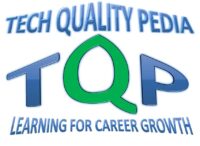WHAT IS 4M CHANGE MANAGEMENT?
The 4M change management is a systematic approach to managing changes to:
- MAN
- MACHINE
- METHOD
- MATERIAL
It helps to ensure that changes are correctly implemented and efficiently, with minimal disruption to operations.
DEFINITION: 4M CHANGE
A situation that affects quality in any way may lead to customer complaints or internal rejection.
The term “change” to a process or product is defined as a situation where the “man, material, machine, and method used for” are not in accordance with the work standard, control plan, work instructions, and customer requirements.
SCOPE: 4M CHANGE
It is applicable to all temporary or permanent changes related to Man, Machine, Method & Material (4M), and engineering standards/specifications change during development and normal production including the supplier production process.
RESPONSIBILITY: 4M CHANGE
|
ACTIVITY |
RESPONSIBILITY |
|
Change Point Control Board |
Shift In-charge/Supervisor |
|
Change Approval |
Quality Head/Plant Head |
4Ms OF CHANGE MANAGEMENT
The 4Ms of change management are:
Man: Any change in people such as operators, inspectors, engineers involved in the process/work/task.
Machine: Any change of machine/equipment/ tools/gauges used in the process.
Method: Any change in the method/way the process/work is carried out.
Material: Any change in the raw materials or other inputs used in the work/process.
TYPES OF 4M CHANGE
There are three types of 4M changes:
- PLANNED CHANGE – EXPECTED CHANGE
- UNPLANNED CHANGE – UNEXPECTED CHANGE
- ABNORMAL CHANGE
PLANNED CHANGE
When we have the information about change in advance then we call it as planned change.
UNPLANNED CHANGE
When we do not have any information about the change in advance then we call it Unplanned change.
ABNORMAL CHANGE
Which is different from normal and not as per specification, and opposite from normal.

4M CHANGE CATEGORIES
All changes for every M are categories as:
- PLANNED CHANGE
- UNPLANNED CHANGE
- ABNORMAL CHANGE
ABNORMAL CHANGE | EXAMPLES
|
CATEGORY |
CHANGE DESCRIPTION |
|
MAN |
Operator sickness or Injury/accident |
|
The operator produces defective parts continuously |
|
|
Manpower deputed after a long break due to natural disasters/Curfew/ Lockdown |
|
|
MACHINE |
Power failure |
|
Continuous rejection produced by machine |
|
|
Machine accident, tool/fixture broken |
|
|
Low tonnage machine used for production |
|
|
Machine run after long duration due to natural disasters / sudden lockdown/curfew |
|
|
METHOD |
Process parameters found out of spec during routine checking |
|
Poke yoke failure observed during routine checking |
|
|
Unidentified material/components |
|
|
The operator not working as per the WI |
|
|
Sudden stoppage of production due to natural disasters/sudden lockdown/curfew |
|
|
Start of production after a long duration due to due to natural disasters/curfew/lockdown |
|
|
MATERIAL |
Wrong material/grade used |
|
Shortage of material |
|
|
Material bin or trolley fell down on shop floor |
|
|
Start of production after a long duration due to natural disasters/curfew/lockdown |
PLANNED CHANGE | EXAMPLES
|
CATEGORY |
CHANGE DESCRIPTION |
|
MAN |
Working after a long time i.e.> 30 DAYS |
|
Working after 12 Hrs. |
|
|
Operator on leave with information |
|
|
MACHINE |
After preventive maintenance of the machine /die /fixture |
|
New machine/die /fixture used |
|
|
METHOD |
Process sequence change |
|
Machine location change |
|
|
Packing method change |
|
|
Checking method change |
|
|
MATERIAL |
Material/source change |
UNPLANNED CHANGE | EXAMPLES
|
CATEGORY |
CHANGE DESCRIPTION |
|
MAN |
Operator on leave without information |
|
MACHINE |
Machine under breakdown |
|
Tool/Die/Fixture under breakdown |
|
|
METHOD |
Measuring equipment/gauge fallen on the floor |
|
MATERIAL |
Unapproved material sources used |
4M CHANGE MANAGEMENT PURPOSE
The purpose or importance of 4M change management is to:
- To control and react to changes that impact product realization processes, including those changes caused by the organization, the customer, or any supplier.
- Changes can have a significant impact on operations
- 4M change management helps to reduce the risks associated with change.
- Helps to ensure that changes are implemented in a way that reduces disruption to manufacturing processes or operations.
CHANGE MANAGEMENT BUSINESS PROCESS
The 4M change management business process is:
- First to identify the need for change or change occurred.
- Evaluate the impact of the change.
- Make a change plan & communicate the change plan to the affected parties.
- Implement the change plan
- Monitor the change, and make necessary adjustments if required.
4M CHANGE MANAGEMENT BENEFITS
- Smoother and more effective change implementation.
- Risk of operations disruption reduced.
- Improved success rate of change efforts.
- Employee satisfaction levels increased
- Customer satisfaction increased.
- Improved product or service quality.
- Increased efficiency by eliminating waste
- Improved workplace safety
- Reduced costs by improving efficiency & waste reduction

